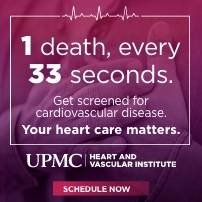November 10th, 2019 by WCBC Radio
West Virginia now ranks among the top five states with the lowest numbers of uninsured children, and it is one of the top five states in reducing its uninsured rates among kids since 2013, according to the West Virginia Department of Health and Human Resources.
A report released Wednesday by the Georgetown University Health Policy Institute’s Center for Children and Families found that 97 percent of the state’s 386,718 children are covered by private insurance, West Virginia Children’s Health Insurance Program (WVCHIP) or Medicaid. The state has reduced its number of uninsured children by 43.7 percent between 2013 and 2014 — roughly 11,000 children — and roughly 10,000 children in the state remain uninsured, said Jeremiah Samples, DHHR deputy secretary for Public Health and Insurance.
“I think that this is a success story that every West Virginian can be proud of,” Samples said. “A child having health insurance means that there aren’t the same barriers to that child seeing their primary care physician for a check-up or, if they’re showing the early signs of a chronic condition, there’s not the same inhibition from the parents — that fear that if they take the child to see a doctor, there’s going to be a cost, and they just don’t have the money.
Since 2011, children of families who earned up to 300 percent of the federal poverty level have been eligible to become insured through CHIP in West Virginia, and those whose parents make below 138 percent of the federal poverty level are eligible for traditional Medicaid.
The top five states with the lowest rate of uninsured children are: Massachusetts, with 1.5 percent; the District of Columbia, with 2.1 percent; Vermont, with 2.2 percent; West Virginia, with 3 percent; and Hawaii, with 3.1 percent.
While West Virginia faces many health challenges, we can feel very good that we have this foundation on which to build a healthy future for our children,” said WVCHIP Director Sharon Carte.
Samples said the remaining 3 percent of children who are uninsured could fall into several groups, including those who are “between coverage” and who already have been determined eligible for state insurance but who have not yet accessed their coverage, as well as those whose parents might be employed by companies that have eliminated family coverage in the wake of the Patient Protection and Affordable Care Act.
The law is that, if the head of the household has employer-sponsored insurance, the other individuals in the household are not eligible for subsidies in the exchange, so that employer — because they now have to provide additional benefits or a higher coverage threshold that will be more costly — they drop their family plans,” he said. “It has, in some ways, created a new uninsured group. That’s not a huge number, but when you’re looking at that 3 percent, I would definitely assume a percentage of them are related to that.
Terri Giles, executive director of West Virginians for Affordable Health Care, said that during her time working under now-retired Sen. Jay Rockefeller, D-W.Va., CHIP was just getting off the ground, and has since become an integral part of West Virginia’s health insurance landscape.
While we have been chipping away at this for years, it was the ACA that really put us over the top,” Giles said. “We saw significant declines in the number of uninsured children, and we’ve seen no increases, even across the nation — it just so happens that West Virginia, in this instance, is on top. We really made this a priority for this state.




.jpeg)












